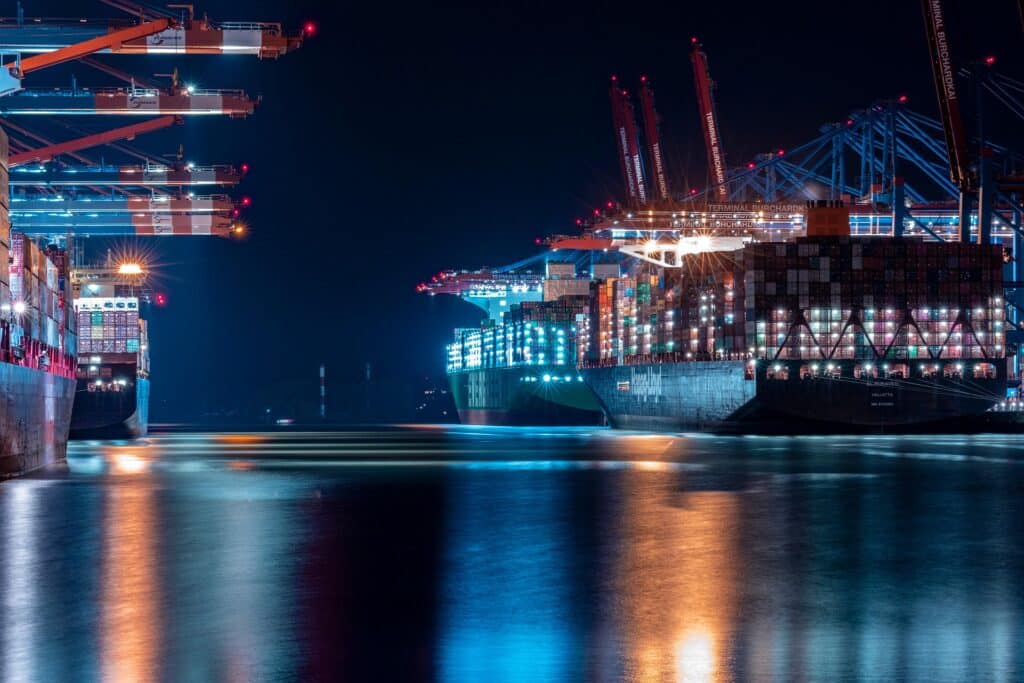How Blue Shipping Turned Q1 Challenges into Strategic Opportunities
The first quarter of 2025 presented significant challenges for the logistics industry. From geopolitical tensions to market volatility and evolving regulations, companies worldwide had to adapt quickly to an increasingly complex and uncertain environment.
At Blue Shipping, we remained on top of these developments, not only to proactively tackle potential issues but also to create new opportunities for our clients.

1. Port Congestion and Strikes: Multimodal Solutions as the Answer
Port congestion, unpredictable vessel positioning, and labor strikes made cargo planning increasingly challenging. These disruptions reinforced the importance of multimodal transport solutions. By expanding our focus on inland terminals, rail, inland waterways, and road transport, we reduced reliance on volatile seaports while also contributing to emission reduction efforts, which are becoming more critical in the logistics industry.
2. Market Volatility: Stability and Competitive Advantage for Our Clients
The Far East Westbound market remained exposed to extreme price fluctuations. To provide our clients with stability, continuity, and competitive pricing, Blue Shipping secured long-term agreements with key partners. These agreements ensured more predictability in an unpredictable market, giving our clients a strategic edge. We however also continue to monitor the spot market closely, giving ourselves and our customers the flexibility to switch from contract to spot and vice versa if necessary!
3. Investing in Own Equipment for Greater Flexibility
To enhance our adaptability to changing market conditions, we made significant investments in own equipment on specific trades.This strategic move allows us to offer our clients more competitive rates in an environment where export freight rates have been declining sharply. Additionally, it enables us to provide greater flexibility in free time at both loading and discharge ports, giving clients more control over their logistics planning.
4. Geopolitical and Economic Uncertainty: Impact and Our Approach
The Red Sea crisis and conflicts in various regions led to higher transport risks, longer transit times, and additional costs due to rerouting via the Cape of Good Hope. At the same time, trade wars and import tariffs created uncertainty, causing many companies to postpone investments. At Blue Shipping, we carefully analyzed the impact on supply chains and helped our clients find efficient, cost-effective alternatives.

5. Increasingly Complex Regulations Demand Expertise
Constantly evolving customs regulations and trade policies have made global logistics more complex than ever. Our Blue specialists continuously deepen their expertise to guide and support businesses in navigating these changes. By strategically investing in regulatory knowledge and automating compliance processes, we ensure that our clients’ logistics operations run smoothly, regardless of shifting trade landscapes.
6. New Carrier Alliances Reshaping the Logistics Landscape
Q1 saw major shifts in the shipping industry, with new carrier alliances restructuring the market. Through our strong partnerships and in-depth market analysis, we quickly adapted to these changes, ensuring that our clients continued to receive the most effective logistics solutions.
Looking Ahead to Q2: Agility and Innovation as Keys to Success
The lessons learned in Q1 have strengthened our strategic approach. At Blue Shipping, we remain committed to proactively monitoring market developments and delivering innovative logistics solutions. Our goal is to provide our clients with stability, efficiency, and competitive advantages in an ever-changing world.
Facing logistics challenges? Let’s discuss how we can optimize your supply chain for the future. Get in touch with us today!

